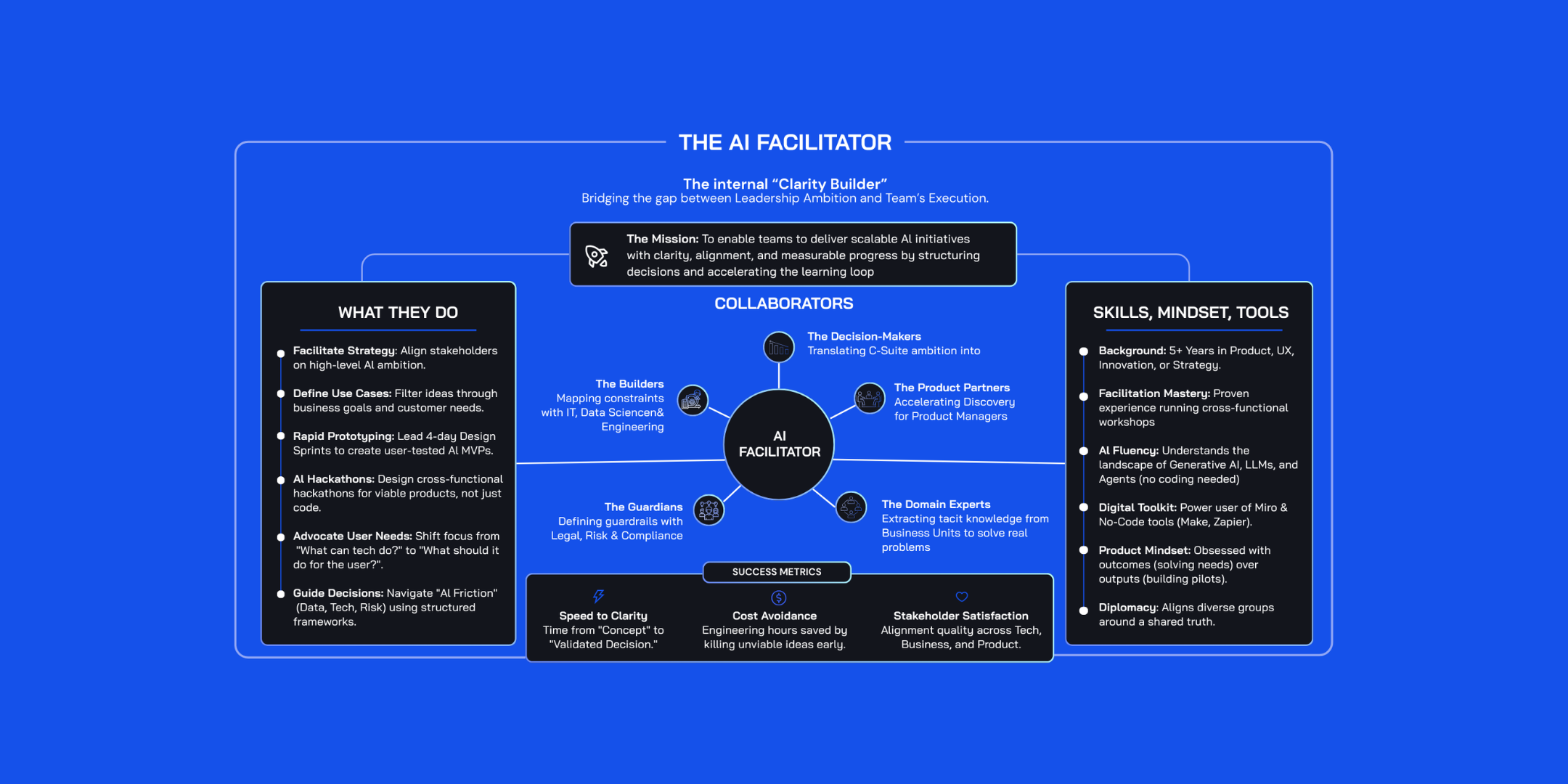Activity-based goals for Innovation Teams

While I'm not in that exact role, at Design Sprint Academy, we employ a similar approach to goal setting, especially when working with corporate innovators to help them achieve their objectives.

First, why is setting goals important?
The answer might seem obvious – we need goals to reach our targets, achieve results, or something of that sort. But more often than not, setting goals for innovation efforts is like most New Year's resolutions: they rarely materialize.
This was the case in 2023 which wasn't a great year for many innovation teams. They struggled with obtaining budgets for their projects and training. Their importance waned, and many innovation leaders found themselves sidelined.
Despite innovation being a top priority for most organizations, these things still happened. Why?
I know it’s not that simple, but fundamentally, I believe it boils down to one main reason:
innovation failed to demonstrate its value.
In other words, innovation represents a loss and not an asset — and this is the only language businesses understand and value.
If you don’t have clear goals, transforming innovation into an asset it’s not going to happen. But also not setting the goals right will get you in the same place.
I will share with you how we set the innovation goals. It is not rocket science, but practical and actionable steps. In the next few minutes, you will learn what it takes to rock innovation at your organization.
The wrong way of setting goals
“But John, we already have goals."
Yes, that might be true. In fact, many innovation managers have some sort of goal. Here are the most common ones:
- Launch new products and business models.
- Increase client revenues.
- Foster a culture of innovation.
- Create communities of practice.
- Set up an internal innovation framework.
You might see variations of these, such as 'Increase revenues by 10%' or something specific like 'The Innovation team will generate $5,000,000 in revenue.'
But here's the thing: these are the outcomes you want, not the goals themselves.
So, what's wrong with this approach?
A few things.
First, these goals are open to interpretation. What does a 'culture of innovation' really mean? This lack of clarity and misalignment rarely benefits innovation efforts. In the end, it's hard to argue that you've achieved your goals if the business perceives it differently.
If the goals are number-based, they might be too ambitious, making them unattainable, or too low, leading to complacency.
Most importantly, with such goals, you're not in control. When your boss asks for a progress update midway through Q2, you need to demonstrate that innovation is working and yielding results. If your goals are vague or based on metrics beyond your influence, you'll find yourself on the defensive, trying to justify your position. And once you're explaining, you've lost.
Let’s Set Some Good Goals Now!
No, it's not as daunting as you might think. In fact, it's quite simple.
The key is to focus on what you can control. While outputs may often be influenced by external factors beyond your control, you can almost always manage the inputs – the things you do.
Take Design Sprint Academy, my company, as an example.
We aim to grow a strong community of innovation experts by the end of 2025. Sounds a bit vague, right?
What if we targeted a 50,000-strong community? More specific, but intimidating and somewhat discouraging.
The size of the community is the output. One of the inputs that will drive this output is writing this newsletter. The very one you are reading now. Our goal is to publish a weekly newsletter, something completely within our control. Initially, we might only have a few subscribers, but consistency is key. The compounding effect suggests that the longer you stick with something, the better you become at it. So, the more we write, the more subscribers we gain, the more we learn about their interests, and the better our writing becomes, attracting even more readers. You get the point.
Results will inevitably follow. Even if we don’t hit our target in one quarter, our consistent efforts will compound, and success will come.
In summary: Make the activities your goals.
As someone responsible for innovation, set goals like this:
- Instead of aiming to be customer-centric, commit to talking to one customer each week. With each conversation, you'll gain deeper insights, driving genuinely customer-centric solutions.
- Instead of launching a new business model, focus on building and testing a prototype every month. A regular experimentation cadence, fueled by customer insights ☝️, will inevitably hit the jackpot (multiple times).
- Instead of improving current processes, create blueprints for each process in the organization. With a clear overview, you'll quickly identify bottlenecks and opportunities will become apparent.
- Instead of building an innovation process, aim to write a playbook for onboarding new hires on your team. This approach forces specificity and clarity in each step, outcome, tool, and method used – exactly what you need in a process.
Another benefit of setting goals this way is that you can quickly see if they’re working. If, after three months of weekly customer interviews, you don’t have insights driving innovation, it’s clear something needs adjustment. It could be your interview technique or maybe the target audience isn’t right. This approach allows you to pivot and optimize your strategy before it’s too late.
Now imagine, how a conversation with a business stakeholder asking for an update would go.
To help innovation managers set practical, achievable goals that align directly with business objectives, we developed the Innovation Strategy Alignment (ISA) Workshop Template.

This hands-on, step-by-step workshop is designed to help innovation teams:
• Identify the business’s key priorities for the upcoming year.
• Map out actionable innovation activities that support these priorities.
• Define specific, controllable actions that can be tracked and measured.
It’s a structured approach that gives clarity and purpose to innovation work, making it easier to secure buy-in, demonstrate value, and avoid the pitfalls of vague or unrealistic goals.



.jpg)





